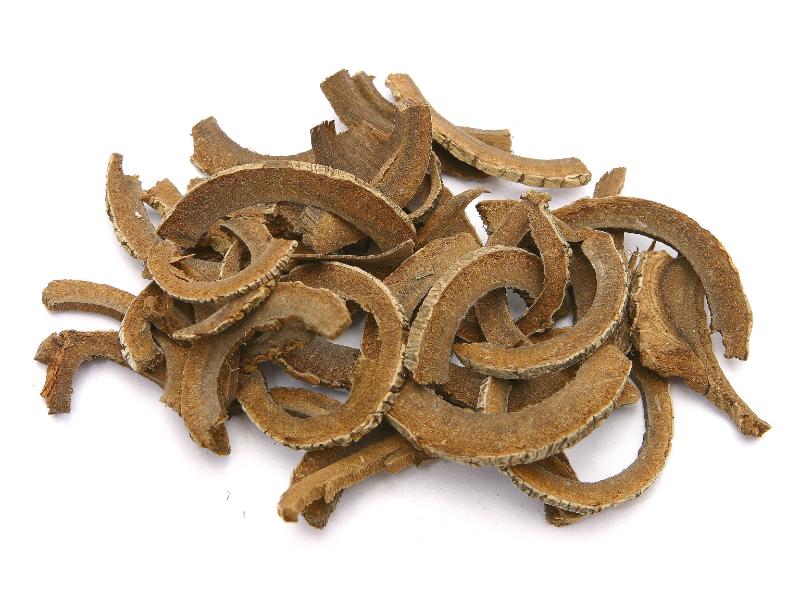Search in medicinals
Magnoliae Officinalis Cortex
Officinal magnolia bark
厚朴 〔厚朴〕 hòu pò

Kingdom: Plant
Origin in PRC Pharmacopoeia: Magnolia officinalis Rehd. et Wils.; Magnolia officinalis Rehd. et Wils. var. biloba Rehd. et Wils. (PRC Pharmacopoeia)
Origin in unofficial sources: Magnolia officinalis Rehd. et Wils.; Magnolia officinalis Rehd. et Wils. var. biloba Rehd. et Wils.
Use: Medicinal
Category:
Properties: Bitter, acrid; warm.
Channel entry: Spleen, stomach, lung, and large intestine channels.
Actions and indications:
- Moves qì and dries dampness: Oppression in the stomach duct, abdominal fullness, abdominal pain, or retching due to qì stagnation and dampness obstructing the center burner.
- Disperses accumulations:
Accumulation and stagnation in the stomach and intestines withbound stool and distension and fullness in the stomach duct and abdomen. - Calms panting:
Phlegm-rheum panting and cough.
Dosage and method: Oral: 3–10g in decoctions; also used in pills and powders. Mostly used stir-fried (with ginger)
Warnings: Use with care in pregnancy.
Notes: Hòu pò varies considerably in appearance because it is sliced in several different ways. High quality hòu pò is expensive and has a high oil content; it glistens in the sunlight.
Product description: This product comes in the form of single or double quills, roughly 35 cm long, and 2–5 mm wide. The outer surface is a dull, grayish brown in color and is rough and scaly in texture, with an irregular grain. The inner surface is a purplish brown with a straight grain. This bark is hard and breaks to leave a jagged fibrous edge.
Quality: Good quality barks have an outer layer thicker than the inner layer and have a clear reddish-purple hue on the cross section. They have a high oil content, a strong smell, and a sweet, acrid taste.
Production area: Sìchuān, Húběi, Zhèjiāng, the best coming from Sìchuān.
Etymology: The name hòu pò 厚朴 is said to reflect the thickness (hòu 厚) of this bark and its unadorned simplicity (朴, 朴).
Back to search result Previous Next